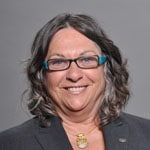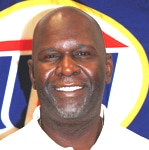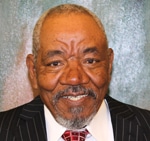 Every two years, Local 265 in Carol Stream, IL, offers the Building Inspector Program, a day-long course that teaches building inspectors how to better inspect HVAC systems. This year, the demand was so great that Local 265 offered the eight-hour course four days in a row, educating about 100 building inspectors in HVAC basics. “The turn-out was phenomenal,” said Dennis Moran, Local 265 Director of Training. “It’s amazing. We were getting party crashers, people from other counties” outside of Local 265’s area.
Every two years, Local 265 in Carol Stream, IL, offers the Building Inspector Program, a day-long course that teaches building inspectors how to better inspect HVAC systems. This year, the demand was so great that Local 265 offered the eight-hour course four days in a row, educating about 100 building inspectors in HVAC basics. “The turn-out was phenomenal,” said Dennis Moran, Local 265 Director of Training. “It’s amazing. We were getting party crashers, people from other counties” outside of Local 265’s area.
The main goal of the course is to teach building inspectors how to properly evaluate HVAC systems for structural integrity. The program was started in 1994 in order to help inspectors do their jobs better and was in part a community-oriented initiative. After all, building inspectors help ensure that homes and neighborhoods maintain their value.
However, due to the demands of the job, the average building inspector is often, as Moran put it, “a jack of all trades and master of none.” The inspectors in the Local 265 area might be electricians, plumbers, or fire fighters. Typically, they are not sheet metal workers, so they are largely unfamiliar with duct design principles. Consequently, inspectors jump at the chance to address this gap in their knowledge: “All these building inspectors are dying for training,” Moran emphasized. As an added incentive, the Building Inspector Program also counts as continuing education units (CEUs), a requirement for many building inspectors to maintain their certification.
As for the course itself, Moran summed up its focus this way: “We’re not teaching them code. They know the code. We don’t. But we know heating and air conditioning.” Moran and his fellow Local 265 instructors Joseph Carone, Tim Donovan, and David St. Peter have taken the base Building Inspector Program (BIP) offered by iTi and adapted it to the needs of their course. What they have produced is a hands-on learning experience that provides participants with a primer on HVAC basics and gives them a chance to get their hands a little dirty. Participants find out about duct design, airflow, proper fittings, and load calculations—and they get to experience a duct blaster and a door blower test. Furthermore, they learn how to identify good and bad sheet metal construction through a physical comparison of different duct elements, like corners.
The team spends time educating participants about “good, better, and best” duct design, especially when it comes to energy consumption. Uninformed building inspectors can overlook duct design as a source of energy efficiency, so taking the time to inform them is crucial. Local 265’s training emphasizes that “better and best” duct design is ideal.
The training team also invites outside speakers to come in and discuss different elements of the sheet metal industry. This year, Jack Lagershausen from the Air Diffusion Council, which promotes the use of flex duct, presented on flex duct and duct connectors. Wally Kurzeja from Air Products Equipment Company, a local sheet metal supplier, discussed elements of Fire Life Safety systems, such as fire damper installation and inspection, as well as new designs and installation techniques. At the end of the course, participants get a complimentary handbook and a certificate of achievement. What Local 265 gets in return for its efforts are building inspectors who become walking, talking advertisements for SMART training and union expertise. “This is excellent PR for [the union],” said Moran. “We show them what we train our people with, and they love it.”
Indeed, comments from course participants demonstrate how impressed they are with the training. “Excellent presentation, learned something from every speaker “ and “very informative and worthwhile, great job!” are just a selection of the extremely positive feedback that the Local 265 training team receives. Some participants even call the course “better than the ICC” (the International Code Council) and praise the practical application aspect of the course: “Finally some practical knowledge about the codes. The demonstrations were very helpful.”
However, what really pleases Moran and his fellow instructors the most is when building inspectors contact them for guidance on the codes. “Usually, for four months [following the course], building inspectors, when they’re not sure of something, they’ll call us. They know we’re well-trained and knowledgeable,” Moran said. This is a tremendous validation of SMART expertise. The building inspectors are often the Authority Having Jurisdiction (AHJ) on a site, and they choose to contact Local 265 when they have questions. As Moran says, “These building officials know where they should go for the best opinion when they’re out in the field.”
For more information on the Building Inspector Program, please contact Dennis Moran at Dennis@smw265.org
Year: 2013

Attendance is limited to 24 registrants.
Those interested in attending the workshop should contact the office of the UTU director of updating/auditing department. Call (216) 228-9400, or email Karen Cashin at kcashin@smart-union.org. The deadline to register is Sept. 23.
While all local treasurers will likely benefit from this workshop, newly elected treasurers are strongly encouraged to attend.
The three-day session will include all training and materials at no cost to local treasurers. However, the local is responsible for all other costs associated with the treasurer’s attendance at the workshop. Lost time or salary, travel, hotel and meal expenses connected with attendance may be reimbursed if pre-approved at a local meeting as an allowable expense of the local.
The workshop will provide local treasurers with hands-on training on the responsibilities and reporting duties pertaining to their office, including direct receipts and Winstabs. It will also focus on completion of mandatory filings for LM reports and Form 990 and DOL requirements.
The workshop will be held at the UTU International Headquarters at 24950 Country Club Blvd., Ste. 340 in North Olmsted. UTU corporate room rates of $78 per night, plus tax, are available at the Radisson Hotel Cleveland Airport, 25070 Country Club Blvd. in North Olmsted, which is conveniently located adjacent to the parking lot of the UTU headquarters. The deadline for room reservations is Sept. 23.
Reservations can be made by calling the Radisson directly at (440) 734-5060. Provide the code “UTU” when making reservations. The Radisson hotel provides complimentary shuttle service to and from Cleveland Hopkins Airport and a complimentary breakfast buffet.
Training sessions will be conducted by UTU International Auditors Stephen Noyes, Bobby Brantley and Mike Araujo.
Space is limited and attendees will be accepted on a first-come, first-served basis. It is recommended that those attending make their hotel reservations at the time of registration.
Attendees should bring a notebook computer and a USB flash drive.
The Federal Railroad Administration (FRA) awarded a research grant for the city of Brunswick, Maine, the Northern New England Passenger Authority (NNEPRA) and the Maine Department of Transportation, among other partners, to participate in a field research program to develop and test new trespass detection and deterrent technologies.
The research will consist of designing, operating and evaluating a large-scale trespass detection and deterrent system to mitigate trespassing along several high-risk areas along the Pan Am Railway and Amtrak’s Downeaster rail line in the Brunswick area.
Read the complete story at Railway Track and Structures.
The U.S. Government Accountability Office (GAO) made public its report on positive train control (PTC) implementation and issued a trio of recommendations including extending the deadline, approving alternative safety technologies and granting provisional certification of PTC systems.
The report said three out of four freight railroads included in its review will not meet the Dec. 31, 2015, deadline and won’t have PTC implemented until 2017 or later. GAO interviewed representatives from Amtrak, the four largest freight railroads and seven commuter railroads, selected to represent a mix of locations, ridership levels and PTC implementation status. GAO also interviewed PTC experts and suppliers and reviewed FRA’s PTC regulatory impact analyses.
Read the complete story at Railway Track & Structures.

By Bonnie Morr, Vice President, Bus –
I was recently informed of the passing of one of our best bus vice presidents. Kenny Moore was the vice president that helped us at Local 23 to become part of this great organization. Kenny Moore was my mentor. He was active in Washington, D.C., and on the state and local levels on all issues pertaining to the Bus and Transit Departments. He was what every vice president should be. I am honored that I had the opportunity to know him. He will be missed, and I will never forget what he stood for. Rest in peace, Kenny Moore. Our condolences to his family.
I would like to thank all the people that attended the 2013 regional meetings. For those that were unable to attend, the Bus Department had a very unique set of presentations regarding the health and well-being of operator and transit workers.
In Boston, the presenters were from both the medical field and the Transportation Learning Center. They presented information on how our health is impacted by our work. Both Dr. June Fisher, M.D., and Robin Gillespie talked about the health issues so many of us are dealing with on a day-to-day basis: long hours sitting, the lack of restroom breaks, and the inability to access good food on the road. The discussions hit home for many of us.
In Anaheim, Dr. Fisher discussed health issues in transit and transportation, both here and around the world. Dr. Peter Schnall, along with Marnie Dobson, led an interactive workshop on stress in transit and its impact on our health. Amy Calvin and John Tatman from the Los Angeles MTA presented a wellness program that they created and discussed results of the program they have seen at the MTA in Los Angeles. These workshops had some of the best attendance by our brothers and sisters that I have seen in a long time. We had between 30 and 60 participants at workshops in Anaheim and about 25 in Boston.
President Mike Futhey came to our open bus workshop in Anaheim. He spoke with the bus members, answered their questions and spoke about the involvement of SMART in our Bus Department. It was an honor. We received updates from our members on what is happening on their properties and spoke about how we could get stronger. If anyone wants information from the workshops, please contact me and I will be more than happy to provide it. My email address is bmorr@smart-union.org.
Vice Local Chairperson and Legislative Rep. Glen E. Johnson has been elevated to the position of director of the SMART Transportation Division’s Human Rights Committee following the retirement of former director Frank Hickman Aug. 31.

A member of Local 937 at Mart, Texas, Johnson hired out with Union Pacific in September 1978 and holds seniority as a conductor and brakeman.
Johnson was originally appointed as a coordinator to the Human Rights Committee by Transportation Division President Mike Futhey in 2010. He has already worked to save dozens of members’ jobs since taking on that position.
Aside from his current local office positions, Johnson also serves as local delegate and legislative chairperson of the Texas State Legislative Board. He has also served his local in the past as secretary & treasurer and chairperson. He brings more than three decades of working railroad experience to his newest position.

The UTU established the position of human rights coordinator in February 2000 as part of a broad-based effort to educate UTU members and employers and to promote awareness of the advantages of diversity in the UTU and in society.
A team of UTU members and UTU International employees was chosen to make up the UTU’s Human Rights Committee to ensure that every voice within the organization is heard and respected.
The other members of the committee are Robert Gonzalez (1563), Billy Moye (1971), David Stinsman (1594), Samantha Taylor (1933), Jesse Turner (1290) and Transportation Division employee Barbara Bankston.

Solar air heating systems are typically integrated onto a building’s wall or roof. They heat the ventilation air required in institutional, commercial, industrial and residential buildings. Solar air heating systems have a rapid ROI compared to other renewable energy technologies and have been used around the world for cold climate air heating or warm climate process heat (such as crop drying). Solar air heating systems have been widely used in the USA and Canada for over 20 years by manufacturing plants, military, agriculture, schools, multi-residential, municipal buildings, and commercial operations. They can displace up to 50% of a building’s heating load and thereby be a significant contributor to global climate change goals.
Solar air heating systems are typically installed by sheet metal contractors. This means that increased deployment in this particular solar technology directly creates employment for sheet metal workers and other similar construction trades. Increased employment has always been a positive economic objective for solar, and now SMART sheet metal members will be ready to participate in this growth by “solarizing” America’s walls and roofs.
According to General President Nigro, “SMART looks forward to the partnership with SAHWIA in expanding alternative energy solutions to improve environmental conditions and increase job opportunities for our skilled members.” SAHWIA is the industry association representing the companies engaged in the manufacturing, marketing, installation and sales of solar air heating technologies across Europe and in North America. Its mandate is to promote public awareness on the benefits, applications, and necessity of solar air heating, as well as to help develop the government policies and programs required to support and accelerate the widespread use of solar air heating throughout the world.
Six people were killed after a train crashed into a double-decker city bus in Canada’s capital Ottawa during rush hour on Wednesday, an emergency official said.
The driver of the bus and five passengers died in the crash, according to Craig Watson, the transit union’s president.
Read the complete story at NBC News.
As 57,000 miles of U.S. crude pipelines threaten to lure business from railroads, Burlington Northern Santa Fe and Union Pacific Corp. are sticking to their bet on the nation’s energy boom.
Domestic oil that was significantly cheaper than imported crude for the last two years allowed refiners to pay rail service’s higher transportation costs rather than use slower, less expensive pipelines. With the oil price difference now narrowing, the share of crude shipped by rail from Williston Basin region in and around North Dakota has decreased for three consecutive months, the longest string of declines since 2011.
Read the complete story at FuelFix.com.
The “Your Track to Health” brand represents the wide array of health and welfare benefits and resources available to eligible railroad employees and their dependents. Whenever you see “Your Track to Health” used on communications and in materials, you can know and trust that the information is important and is being provided to help you better understand and optimize your health and welfare benefits.
On Sept. 15, eligible railroad members will be able to securely register on yourtracktohealth.com. An email address is required to complete the online registration at yourtracktohealth.com.
By registering on yourtracktohealth.com you:
- Can securely access and manage your family’s health and welfare benefits account online.
- Can use your new username and password to securely log into the Railroad Enrollment Services online portal to easily and conveniently change or enroll in your 2014 benefits during “open enrollment” this fall.
- Could win an amazing prize!
Eligible members who register on the site will be automatically entered for a chance to win one of 15 prizes including:
- An iPad® Mini (2)
- A Kindle® e-Reader (3)
- A SodaStream® soda maker (5)
- $100 gift card to DICK’S Sporting Goods stores (5; redeemable online and in stores)
The chance to win ends Nov. 11, 2013. See the complete rules at yourtracktohealth.com/PDF_Files/sweeps/rules.pdf.
The yourtracktohealth.com website launched in July with a completely new look, feel and navigation, plus new healthy living content that may be used to help you improve your health. This new website replaced the previous Railroad Information Depot.
